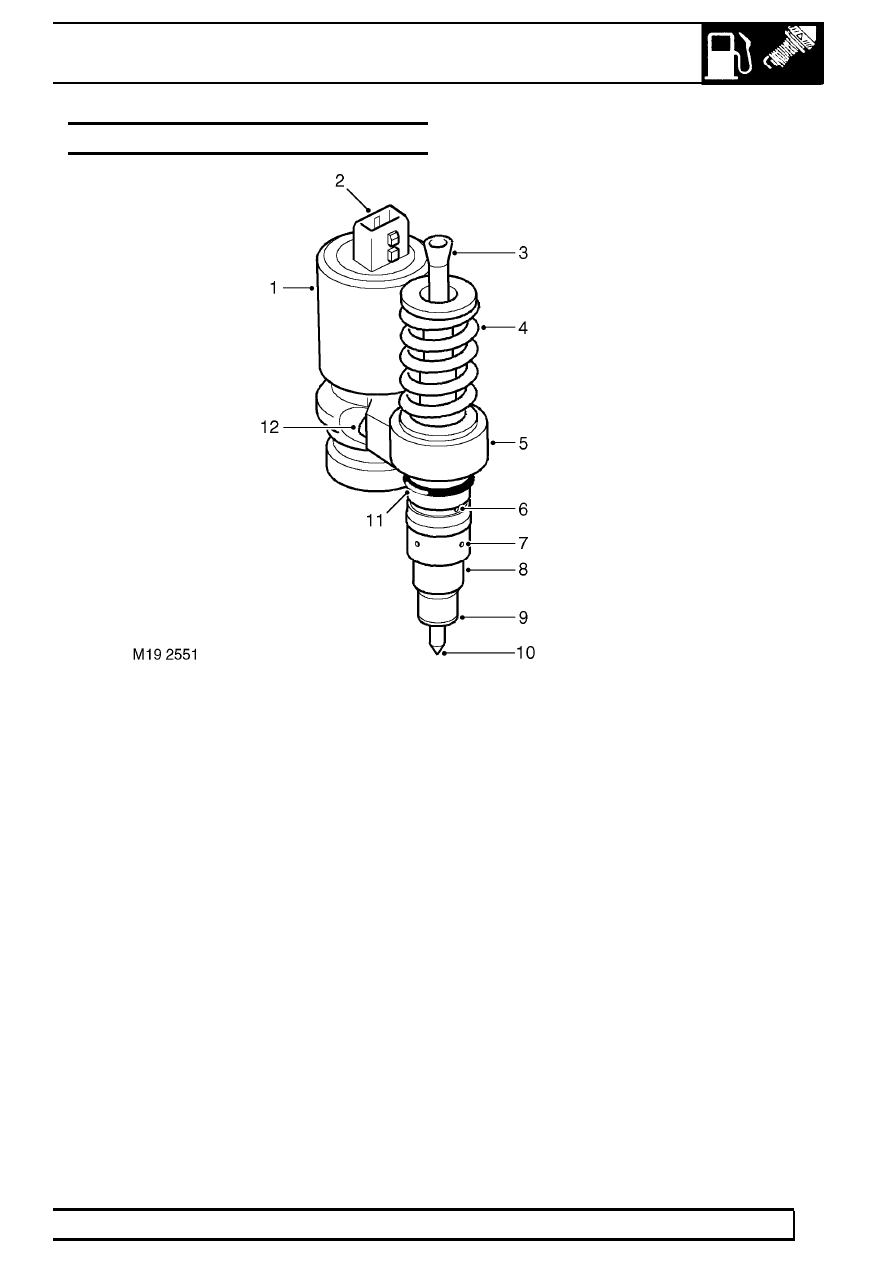Defender (1999-2002). Manual - part 59

FUEL SYSTEM
7
DESCRIPTION AND OPERATION
INJECTORS
1. Solenoid housing
2. Electrical connector
3. Push rod socket
4. Push rod return spring
5. Housing
6. Fuel delivery port
7. Fuel return port
8. Nozzle cap nut
9. Copper washer
10. Nozzle
11. ’O’ ring
12. Cap screw
The five injectors are located in the cylinder head adjacent the camshaft, with the nozzle of each injector
protruding directly into the cylinder. Each injector is sealed into the cylinder head with a ’O’ ring and copper
washer and secured with a clamp and bolt.
Each injector is operated mechanically by an overhead camshaft and rocker, and electrically by a solenoid
controlled by the ECM. Each injector is supplied with pressurised fuel from the pump via the regulator housing and
internal drillings in the cylinder head.
The solenoid housing is secured to the injector body with two cap screws and is a sealed unit. It has a two pin
electrical connector on its top face.
The injector body is machined from a forging. The body has a machined central bore which locates the push rod.
A thread on the outer diameter provides the attachment for the nozzle cap nut. The body also provides attachment
for the solenoid housing.